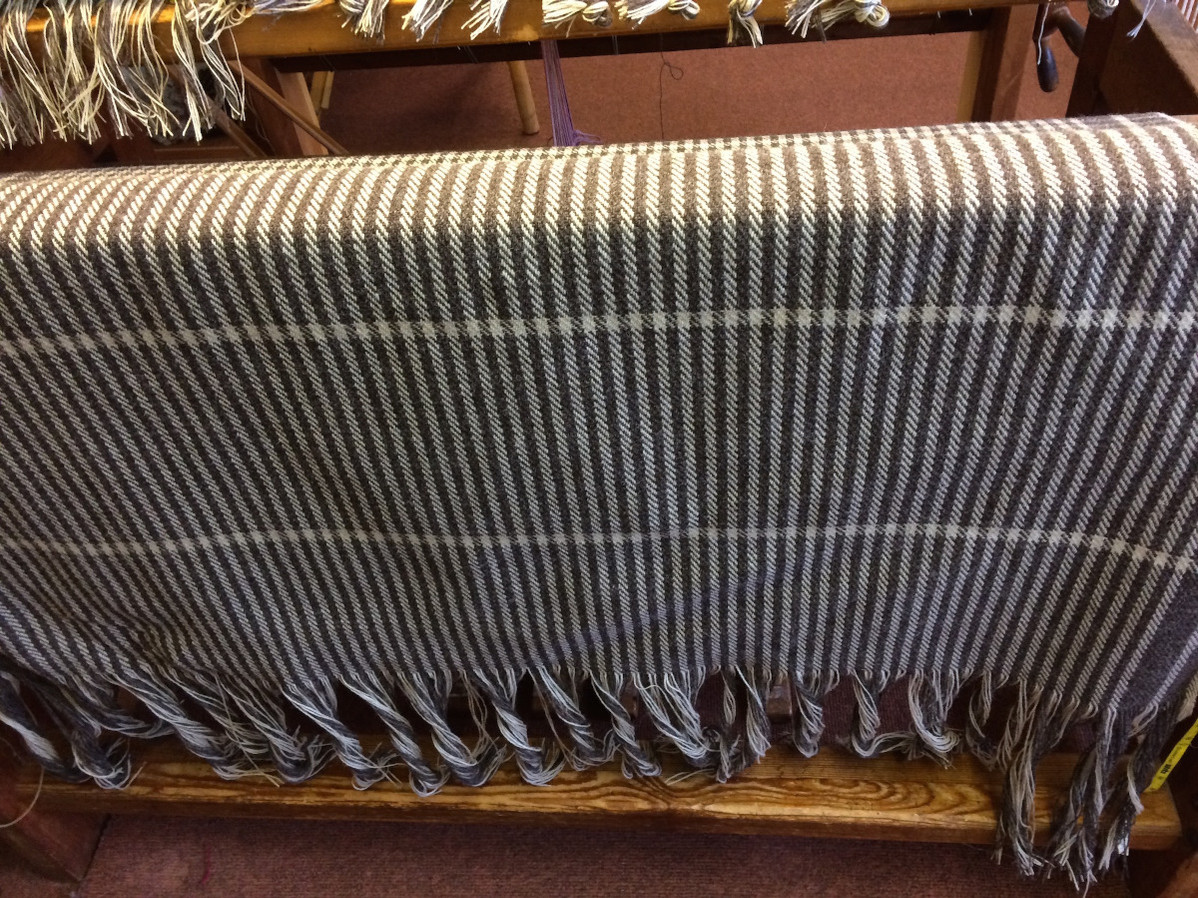Create Your First Project
Start adding your projects to your portfolio. Click on "Manage Projects" to get started
A Shepherd's Plaid for Keith.
Late 2016 I was contacted by a potential customer with an enquiry about a commission which would prove to be the most absorbing and interesting for a long time. The commission was to weave a Shepherd’s Plaid, a garment specific to Northern England and Southern Scotland. My client, Keith, had very clear ideas of what he wanted in his plaid and it was so enjoyable to work with an interested and knowledgeable person.
I had woven a plaid two years previously - see A Plaid for Northumberland- and, as it is such an unusual item, I had never expected to weave another, especially so soon. During my research for the original plaid, I had learnt quite a bit about the fabric but I wanted to take my research further for this commission so I made an appointment with the archivist at Heriot Watt University in Galashiels to see some of the plaids in their collection.
The two plaids I was shown were very different in both scale of pattern and condition. The first was woven in natural black and white in a design very similar to the one I had originally woven; it’s condition was absolutely remarkable for a piece of cloth that was around two hundred years old.
The second plaid was a finer fabric, almost like a dress fabric, and woven in dyed navy blue and fawn; the checks were much smaller in scale than the first. It had been woven in two widths and sewn together to form a wider cloth; the end had been stitched to form a triangular hood. I had never seen this on a plaid before but it seemed a sensible addition to the garment. The condition of the plaid can best be described as well worn; it was patched, stitched and darned in numerous areas, obviously a well-worn, well-loved item.
It was fascinating to see the two plaids but it was from the first that I took most of my ideas; Keith wanted a heavy cloth in natural colours and had good ideas for the stripes along the selvedges and along both ends of the plaid.
The setting up of the loom was time consuming and having to do a wide, heavy warp single-handed required concentration. The plaid was woven to 120cms wide and was required to be over 5 metres in length so there were six, 20cm wide warp sections, all of which had to be carefully controlled and tensioned as they were wound onto the warp beam. This is not a particularly difficult task but it is one that deserves time to get right; a well-wound, well-tensioned warp will prevent problems later in the process. The measuring of the warp and dressing of the loom took approximately two days but once I began to weave I had to ration myself to half-hour sessions because the cloth needed such a heavy beat to achieve the density, I quickly began to feel the tension build in my shoulders and back.
Despite having to take regular breaks the plaid grew fairly quickly; once it was off the loom another physical process was needed to finish the cloth. Fulling is a process which allows the fibres in the wool cloth to begin to felt together to make a strong, more durable fabric. Historically, this would have been done by a number of women ‘waulking’ the cloth in a communal effort, often singing while they worked. The method I use is slightly different but no less effective; trampling on the cloth in a bath of hot soapy water over quite a long time shrinks the fabric in a controlled way. Care has to be take to trample over all areas of the fabric to make sure shrinkage is equal but as I had previously done a sample to work out the shrinkage percentage, I knew what I was aiming for. My sample had shrunk by 20% which was why the cloth was woven to over 5 metres; once the fulling was finished the plaid measured 105cms x 420cms.
Keith also had a few extra little requests; his initials embroidered in cross-stitch close to one corner, a small crucifix hiding amongst the checks and a small embroidery to identify myself as the weaver. It was quite common for the owner of a plaid to have their initials embroidered onto the cloth and this little extra touch to Keith’s made it all the more authentic.
Read what Keith has to say about his commission at www.flight-weaving.co.uk/keiths-plaid
























